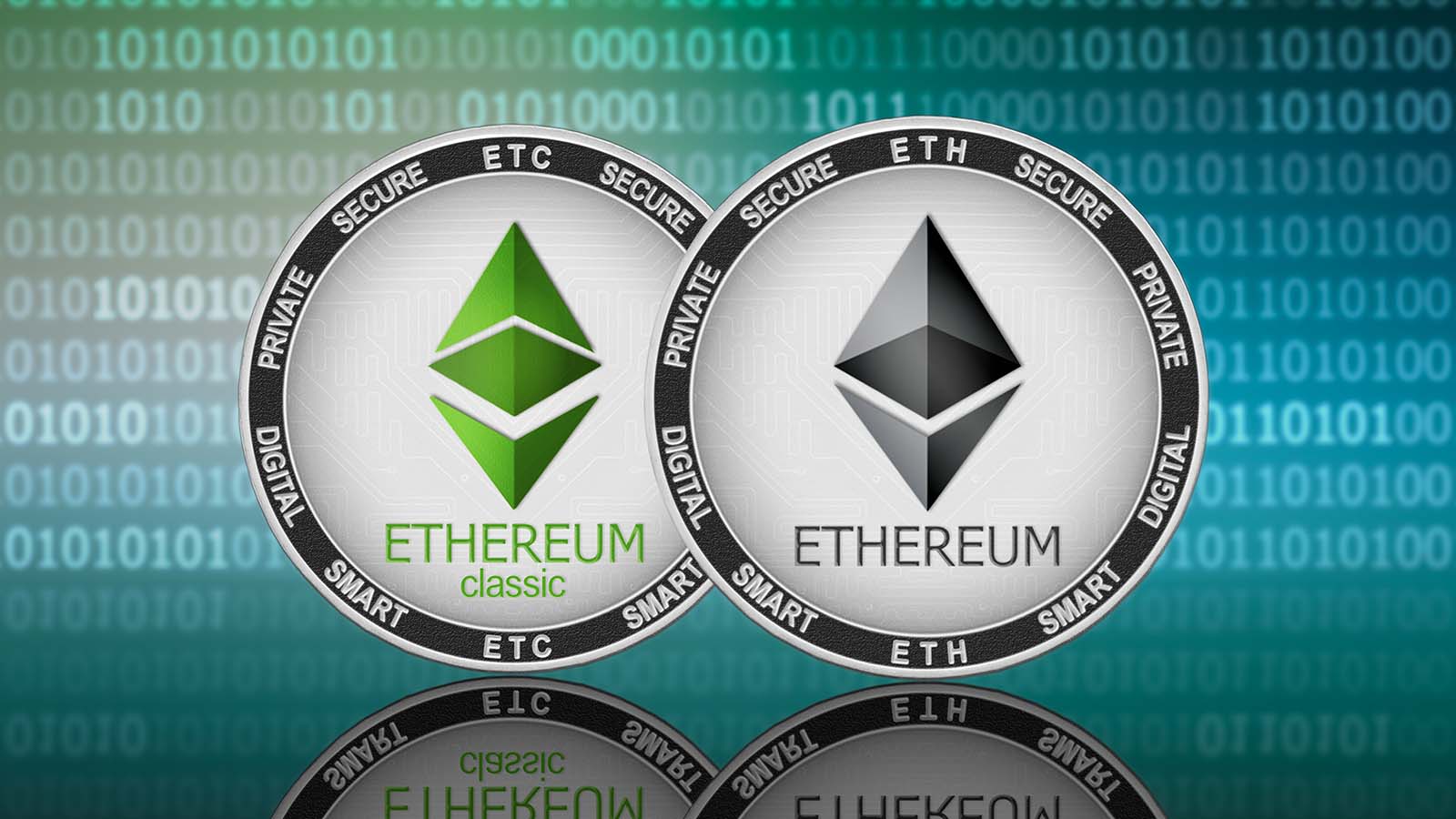In the early days of the cryptocurrency movement, things were pretty simple when it was just getting started. Bitcoin and Ethereum have become two of the most well-known names in independent digital currencies. The number of coins in circulation was carefully limited, and terms like “network split” and “hard fork” were only used by blockchain pioneers. Despite this, many new coins appeared on the Bitcoin market over a few years, which is a vast place. Some tokens went through a process that changed them. They were given a new software code, which made them look like different versions of themselves. The event in question concerns the different paths of Ethereum and Ethereum Classic, which both exist as separate coin systems at the moment.
In this talk, we’ll take a deep look at what makes Ethereum and Ethereum Classic different, as well as the subtle differences between the two. One must figure out where the Ethereum project came from and how it differs from other blockchains. If you look closely, you’ll be able to see what makes these two networks different from each other.
Just What Is This Thing Called Ethereum?
Ethereum (ETH) is the leading altcoin in cryptocurrency. Vitalik Buterin’s foresight in proposing a programming language to build a new application on Bitcoin’s architecture led to the Ethereum blockchain.
The Bitcoin community rejected the individual’s idea. Buterin founded The Ethereum Foundation, a visionary investment entity to realize his innovative idea. The crowdsourcing campaign raised $17 million in cryptocurrency, more than enough to launch the open-source Ethereum network.
On July 30, 2015, Ethereum was ceremoniously launched. Due to its ability to write intelligent contract-based DApps, the new system quickly attracted crypto traders and decentralized autonomous organizations. At that time, decentralized cryptographic asset governance saw a breakthrough. The Ethereum ecosystem, which rivals Bitcoin in scope and technology, remains the top digital currency.
What Exactly Is Meant by “Ethereum Classic”?
Ethereum Classic, also known as ETC, is the ancestor of Ethereum. It first appeared in the spirit world in July 2015, when it was called Ether Classic. But after the critical hard fork of the Ethereum leading network in 2016, which happened in 2016, it was named “Classic.” The famous hack of The DAO, in which 4 million ETH were stolen, started the blockchain split. In a first-of-its-kind move, a firm decision was made to cancel all deals related to the malicious attack. This was done to protect the investors’ financial interests. But in the world of blockchain technology, it’s not possible to do something like that. So, to get the money back to the respected owners, a hard fork was used to create a new chain of blocks that started from a point before the bad thing happened.
The significant changes in the Ethereum environment will inevitably bring out many different points of view, and not everyone will be fully on board. Under the direction of the Vitalik Buterin, a group initially supporting the fork decision later switched sides to support the new blockchain branch while keeping the Ethereum name. Ethereum Classic is the name given to the original version of Ethereum, which a group of creators supports.
Ethereum versus Ethereum Classic: What’s Different?
In the world of cryptographic systems, there are many ways in which Ethereum and Ethereum Classic are very similar. Both cryptocurrencies are based on smart contracts, which make it possible for digital apps (DApps) to run smoothly. A cold wallet or a hot wallet can be used to store these digital goods safely. Still, it is essential to recognize the many differences between these things, as they are different environments with different goals and chances for growth.
Concepts and Originality
Vitalik Buterin, who came up with the idea for Ethereum, had a very forward-thinking mind. In the past, the mysterious world of blockchain technology and the complicated workings of the Bitcoin system held the attention of young programmers for good. During that time, the second individual had a clear edge because he was the only one in the field.
When Buterin realized that Bitcoin had its limits, he built the new idea of smart contracts into his cryptocurrency project. This different encryption version made it easier for the latest blockchain to gain followers worldwide.
Intelligent contracts are systems that use cryptography to make it easier to carry out deals in the digital world. In the world of cryptographic exchanges, you can do many things, like buy or sell real estate through Ethereum’s automatic payment system. One can also look into more complicated situations, such as decentralized asset swaps and using distributed financial applications, among other things.
The functions of Ethereum Classic are the same as those of Ethereum. The only difference is that the coders, led by Buterin, have yet to agree to support it. Since then, the ETC infrastructure has become very fragile, with DEX, DApps, NFTs, and other web 3.0 services still in their early stages of development. Because Ethereum Classic doesn’t have enough support from the public, it has been the target of many 51% strikes. It is important to note that the latest version of Ethereum has been refined with these.
Supply and Distribution
According to the well-known Coinmarketcap, the amount of Ethereum (ETH) in circulation at the start of the great year 2023 was 120 million units. At the same time, it’s important to note that there are no limits on Ethereum’s total supply. However, the highest number of tokens that can be issued each year is set at 4.5% of the total number of tokens in circulation.
At the moment, there are about 140 million Ethereum Classic tokens in circulation. The ETC’s highest supply is carefully set at 210 million units, making sure that there is a hard limit beyond which no more emissions will happen.
It is essential to note that both Ethereum and Ethereum Classic have a distributed way of distributing tokens. As of March 2023, it’s important to note that the top 15% of Ethereum wallets hold about 15% of the total ETH supply and 25% of the total ETC supply. When you compare Ethereum to its rival, Ethereum Classic, you can see that Ethereum is a model of increased sharing in the world of decentralized digital assets.
Transactions and Speed
Ethereum and Ethereum Classic have always been able to handle between 12 and 15 transactions per second. Recently, however, a performance barrier of 19 transactions per second has been seen. How long an Ethereum transaction takes depends on the commission, also known as the “ETH gas fee,” which is the amount of money that needs to be paid for the transaction to be performed. In the world of cryptographic systems, it is a well-known rule that the speed at which a trade is completed is directly related to the amount of money the person using the system spends on petrol.
After the much-anticipated release of the ETH 2.0 upgrade in 2022, which was a big deal, I’m happy to tell you that the Ethereum network has seen a massive increase in the speed at which transactions are processed. In the world of Ethereum, it’s essential to know that ERC-20 tokens must pay a fee measured in ETH. As more and more coins are made on the Ethereum platform, the demand for the asset goes up.
So, the number of transactions and the speed at which they are processed differ between Ethereum and Ethereum Classic. Ethereum Classic is stuck in the limits of its inflexibility, which makes it a bit of a prisoner. As we move into the year 2023, it’s clear that this platform isn’t as technically advanced as others that are more forward-thinking.
Conclusion
There is a big difference between Ethereum and Ethereum Classic. The original version of Ethereum was a decisive break from Ethereum that took all of its strengths and weaknesses into account. Given that most people in the ETC community are conservative, it seems unlikely that Ethereum Classic will be improved in a big way. At the same time, growth keeps moving forward without stopping. Systems like Solana and Aptos are part of a new breed of DApp systems. Because of how slowly it has changed, Ethereum Classic is now behind its replacement, Ethereum.
Ethereum has a lot of built-in benefits that make it a very appealing choice for savvy long-term buyers. There are a lot of signs that Ethereum Classic’s market size and actual value will slowly decrease over time. The mysterious potential of Classic is still wrapped in a secret, and the cryptocurrency community eagerly looks forward to the surprises it may bring in the days ahead. There’s no question that Ethereum Classic will always have strong support because of its rich history, unwavering commitment to its principles, battle-tested intelligent contract technology, token’s low price, and the way its trades work.


